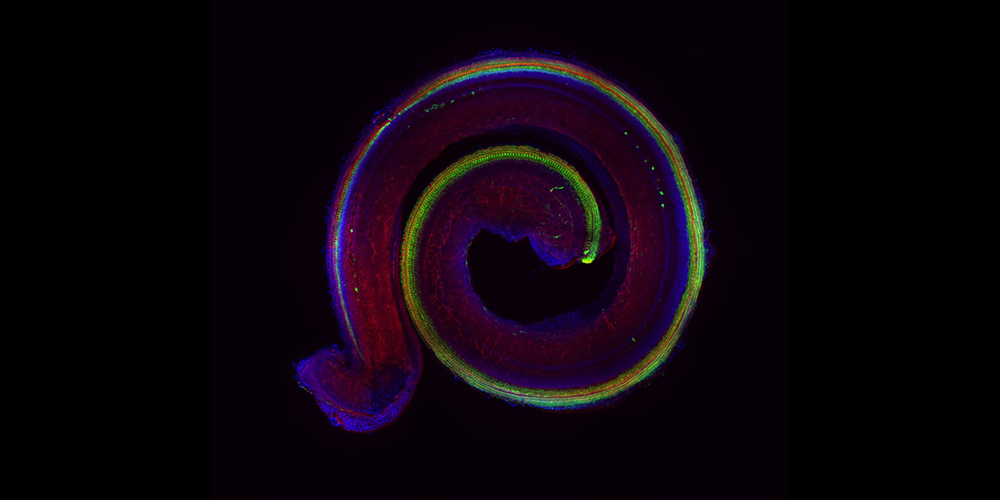Hearing loss eventually affects almost everyone: Loud noises or simple aging gradually cause the auditory sensory cells and their synapses in the inner ear to degenerate and die off. The only treatment option is a hearing aid or, in extreme cases, a cochlear implant.
“In order to develop new therapies, we need to better understand what the auditory sensory cells need for proper function,” explains Dr. Maurizio Cortada from the Department of Biomedicine at the University of Basel and University Hospital Basel. In collaboration with Professor Michael N. Hall’s research group at the Biozentrum, Cortada investigated which signaling pathways influence the so-called sensory “hair cells” in the inner ear. In the process, the researchers discovered a central regulator, as they report in the journal iScience.
This signaling pathway, known by researchers as the mTORC2-signaling pathway, plays an important role, among other things, for cell growth and the cytoskeleton. The role it plays for the hair cells in the inner ear has not previously been studied.
When the researchers removed a central gene of this signaling pathway in the hair cells of the inner ear of mice, the animals gradually lost their hearing. By the age of twelve weeks, they were completely deaf, the authors report in the study.
Fewer synapses
Closer examination indicated that the sensory hair cells in the inner ear lost their sensors without the mTORC2 signaling pathway: hair cells have protuberances similar to tiny hairs that are important for transducing sound into nerve signals. These “tiny hairs” were shortened, as the researchers determined with the use of electron microscopes. The number of synapses that transmit the signals to the auditory nerve was also reduced.
“From other studies, we know that the production of key proteins in this signaling pathway decreases with age,” Cortada explains. There may be a connection to the loss of synapses and the reduced function of the auditory sensory cells in the inner ear that leads to hearing loss with increasing age.
“If this is confirmed, it would be a possible starting point for future therapies,” says the researcher. The middle and inner ear, for example, would be readily accessible for locally-administered medications or gene therapies. The results could pave the way for the development of such treatment options.
Original publication:
Maurizio Cortada, Soledad Levano, Michael N. Hall, Daniel Bodmer: mTORC2 regulates auditory hair cell structure and function. iScience (2023), doi: 10.1016/j.isci.2023.107687
Contact: Communications University of Basel, Angelika Jacobs



